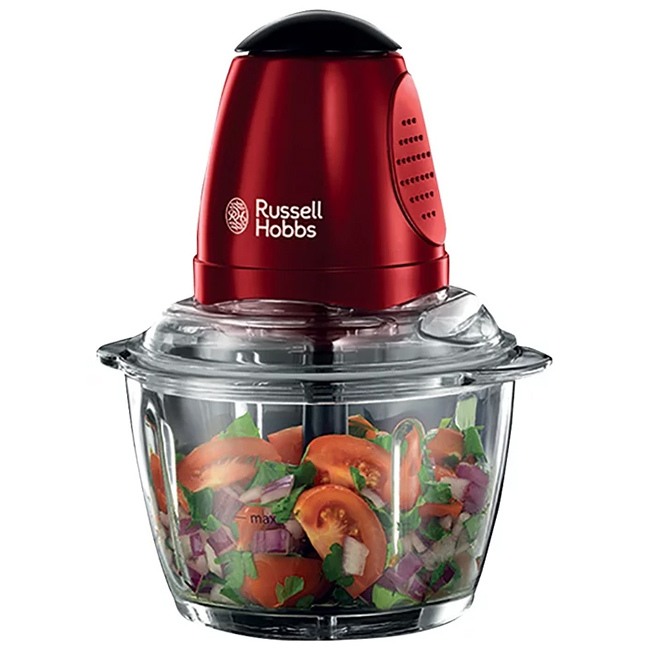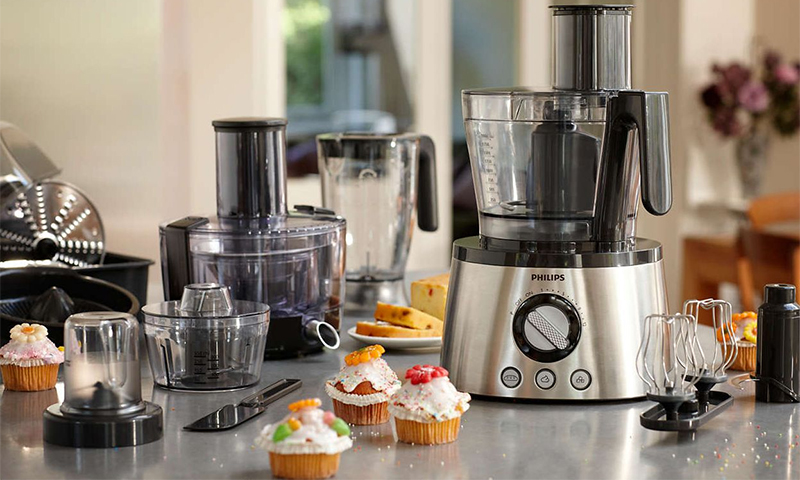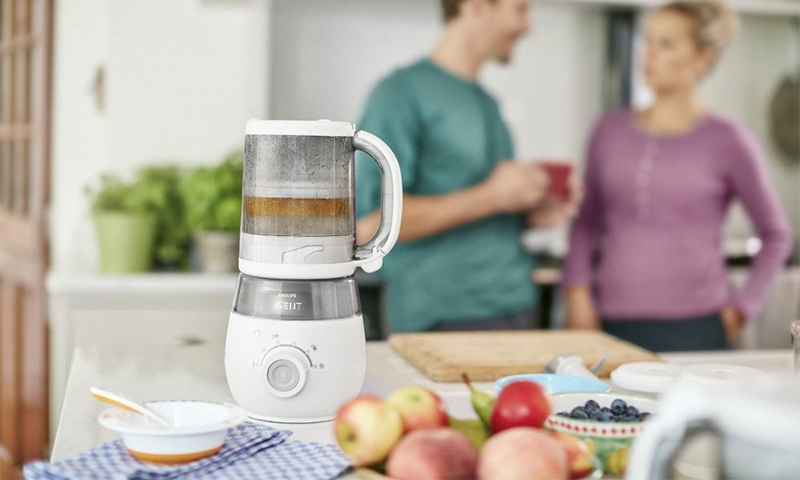Lovers of salads, purees, homemade sauces and pastries know how much time and effort is spent preparing these dishes. But most of this work can be relegated to modern technology. It is expensive to buy a separate unit for each product group, and sometimes there is no place to store such a number of devices. It is better to immediately take a functional combine, which will replace your blender, mixer, meat grinder, vegetable cutter and juicer.

Content:
The best food processor manufacturers - which company to choose
The universal technology has one serious drawback - it is inferior to individual devices and in terms of power and reliability. However, among the manufacturers of food processors there are companies that have repeatedly argued the opposite.
Reliable, functional and powerful combines can be found in the rulers of famous brands:
- Bosch;
- Kenwood;
- Clatronic;
- Moulinex;
- Philips.
You will find their best models in our review of new kitchen appliances. But first, let's look at the nuances of choosing these complex, but useful units.
The principle of operation and the device of the food processor

The basis of any food processor is the case, inside which is hidden the motor and the electronic filling, which controls the operation of the entire device. It sets the speed of rotation of the drive shafts, turns off the engine when it overheats, and in advanced models it also keeps track of the program execution time.
For the owners, however, the control appears in the form of buttons, rotary knobs or sensors.
But this is all - only the basis for the realization of the capabilities of any combine. And they are truly limitless in modern models.
Here the crucial role is played by the nozzles that are included:
1. Graters and shredders of all shapes and sizes;
2. Juicers and presses;
3. Emulsifiers for beating and nozzles for kneading dough;
4. Blender knives;
5. Meat grinders;
6. Melenki for spices, coffee, etc.
To perform basic operations, combines are equipped with separate containers: open bowls, glasses of choppers and shakers, receiving trays, etc. And more recently, real kitchen machines began to appear in stores that have built-in electronic scales and even induction mini cookers for cooking and heating dishes.
All moving and rotating elements of the combine are mounted on the output shafts. There may be one or several of them, depending on the features of the chosen structure. In the first case, you have to alternately attach different containers to a single stock, preparing only one dish at a time.
If there are at least 2-3 separate shafts on the hull, and with the possibility of simultaneous switching on, the processing speed of the products will increase by several times, and dinner will be ready in a matter of minutes.
Types of food processors
All-in-One Universal Combines

This family includes large multifunctional combines with a huge number of attachments. With their help, you can quickly cook almost any dish that is on your menu, starting with a salad and ending with homemade pastries.
Now such models have been manufactured on the basis of planetary mixers, expanding their capabilities due to additional shafts and containers for grinding products.
Pros:
- Good power reserve;
- Many speeds;
- Availability of several separate drives;
- Universality;
- Robust hull design;
- Spacious containers that allow cooking large portions for the whole family.
Minuses:
- The cost of a good universal combine a priori can not be low;
- The bulky design and not very convenient storage, even if the case has compartments for nozzles.
Combine-shredders

This category includes both appliances with a blender and a meat grinder, as well as various electrical appliances, which can be supplemented with nozzles for making fresh juices and juice from berries.
Unlike most universal combines, there are often not cups, but only blades and grids, because in such devices, in fact, there is one function - to cut and chop products.
Pros:
- More compact full-size multifunctional combines;
- Higher average power - especially for combines with meat grinders;
- Rich selection of cutting tips;
- More affordable than universal models.
Minuses:
- Limited functionality;
- The meat grinder built into such a combine will always have less power than a freestanding one.
Mini harvesters

In contrast to the universal models with every conceivable nozzles, these single-drive combines have a narrow "specialization". More often, you can find only a few shredded chops, as well as a cocktail shaker and sometimes a juice press.
The power of mini-devices is small - some consume no more than 200 watts and are designed to work only with soft and juicy fruits. But even more advanced units do not give more than 400-600 watts.
Pros:
- Compact size and convenient storage;
- Some devices allow the use of ordinary kitchen utensils;
- Existence of the pulse mode and 2-3 speeds for preparation of dishes of a different consistence;
- Affordable cost.
Minuses:
- Low power;
- Only one drive, forcing to rearrange the bowl in turn, and even cook in the only available capacity;
- Small volume of preparation (on average 1-1,5 l).
Handheld combines

Despite their simplicity and manual drive, these models also belong to combines. True, their versatility is associated only with the number of interchangeable nozzles.
These are standard grater discs with blades of different shapes and sizes, allowing you to cut food into cubes, straws, bars, slices, etc. But you will have to turn the handle yourself.
Pros:
- Absolute autonomy;
- Compact size and low weight;
- Ease of use;
- Full control over the cutting process.
Minuses:
- Some types of products are difficult to grind by hand;
- A small amount of working bowl - up to 2 liters.
Options for choosing a combine for the kitchen

Drive power
This parameter determines how well your combine will cope with the tasks:
1. For simple grinding and mashing of boiled products, 200-300 W will suffice;
2. To twist raw meat for stuffing, the device must develop a power of at least 600 watts;
3. Knead dough can make the engine no weaker than 800-1000 watts.
Large capacity should also have all-in-one multifunction devices, since they have to work with a variety of products. In order for your combine to easily grind even ice, coffee and breadcrumbs for breading, to cope with woody pieces of meat, you need a capacity of at least 1-1.2 kW.
Also pay attention to the number of speeds, since each operation with a particular type of product requires its own mode of beating, mixing or grinding. If your family appreciates a rich and varied menu, and you are going to use the combine every day, look for a model that will have at least 5-6 speeds.
Body material
The best combines always come in a steel case (stainless steel or polymer coated). The presence of plastic should be alerted, especially if the obviously inexpensive model of a little-known manufacturer came across.
Nevertheless, popular companies offer excellent units in a plastic case. Only for their manufacture is used really strong and tough ABS material, which does not “play” under the weight of the car and does not creak in the hands.
Bowls and loading tanks
The amount of ready portions depends on how capacious the complete bowl of the combine is. So the more in the family of consumers, the larger should be the loading capacity. Ideally, the selected device can be used with other dishes that are already in your kitchen.
Pay attention to the material manufacturing complete bowls.
Today, manufacturers of kitchen appliances offer the following options:
1. Plastic
Inexpensive solution to reduce the cost (and weight) of the combine itself. Such containers are strong enough, but over time, the plastic can become covered with the smallest scratches, which are painted with the juice of the products. Wash after such transparent glasses will not succeed.
2. Metal
It is durable and hygienic, but does not allow to control the process of food processing. Therefore, manufacturers often offer combines, where only a large bowl for kneading dough is made of stainless steel, and all other container cups are made of glass or plastic.
3. Glass
The best choice for kitchen appliances - glass containers combine 100% hygiene and resistance to staining, as well as to any alkalis and acids. But this material is expensive and fragile. And if you break the bowl of your combine, find the same will be difficult (with the exception of models of advanced brands that sell including accessories for their devices).
Features of individual mechanisms
Choosing a food processor, you will have to use the same rules as when buying individual shredders, blenders and mixers. Only need to apply them all at once. Let us briefly list the main nuances that are worth paying attention to.
Blender Type
It can be submersible, but more often it is just a glass of a shaker with knives located below. The first option is suitable for grinding dense foods, raw vegetables, cooking pastes.
“Stationary” blenders are designed to work with liquids (cocktails, mashed soups, smoothies), although, in the presence of a pulsed mode, they cope with crushing ice and nuts.
The principle of the grinder
In low-cost combines most often set the meat grinders percussion. There is not much sense from them, because here the meat is simply broken into a pate, simultaneously losing juice. As a result, dishes from it are obtained "dry", tough and tasteless.
Cooking the correct stuffing is possible only with the help of a screw device. But then you have to look for a combine of sufficiently high power (0.8-1 kW or more), otherwise the purchase will not be worth it again.
In order for the meat grinder to not become the weakest link in the whole structure, the kitchen assistant must have additional functions: reverse and protection from engine overheating. Then even a cartilage or a piece of meat that is too hard will not bring the unit out of order.
Juicer
This device is found in many combines, but may differ in its design in different models.
Some manufacturers are limited to a simple citrus press, which in most cases is useless. Others provide a full-fledged centrifugal juice extractor with a filter for cake and sunflower seeds, capable of processing even fruits with dense pulp.
Which food processor to choose

1. For a couple living without children, a small mini-combine will suffice. There is even a 1.5-liter bowl enough to cook dinner for two. A device with a power of about 500 W in a plastic case will show itself well. But the boot capacity is better to choose from the glass.
2. Lovers of a variety of salads and homemade preserve suitable shredder with a large number of nozzles. This can be taken with you to the country to process the crop on the spot. A rich selection of shredded discs will be only a plus. And yet you should not consider this device as a complete combine - it is rather a nice addition to the blender and meat grinder already in the kitchen.
3. A family of 3-4 people will need a combine-chopper capable of performing the functions of a meat grinder and blender.A glass chopper for quick cutting vegetables, as well as a screw juicer will be useful. Owners of small kitchens, where there is no place for storing several separate appliances, can safely choose this option. The main thing is that the power of the device was not lower than 600-800 W, and the main tanks contained at least 2-2.5 liters of products.
4. Those who cook a lot and try to diversify the usual menu, can not do without a large universal unit. There should be a separate vegetable cutter with several disks, a submersible blender mixer, as well as a functional meat grinder with attachments for minced meat, sausages, kebbe and other useful tools. So that such a technique copes well with its tasks and does not overheat, take a device with a capacity of at least 1 kW with several separate drives on the case.
How much does a food processor

1. A universal entry-level harvester can be bought for 6000-8000 rubles, but really good models fall in the range of 15-40 thousand. Then everything depends on your financial capabilities - the price ceiling for modern kitchen machines is at the level of 80-120 thousand rubles.
2. Combines, "sharpened" under the grinding of products (with a blender, meat grinder and shredder), are much less - in the range of 3-15 thousand rubles.
3. Compact mini-harvesters are half the cost of shredders, and a manual shredder will cost you 800-1500 rubles.
It will be interesting to friends too









